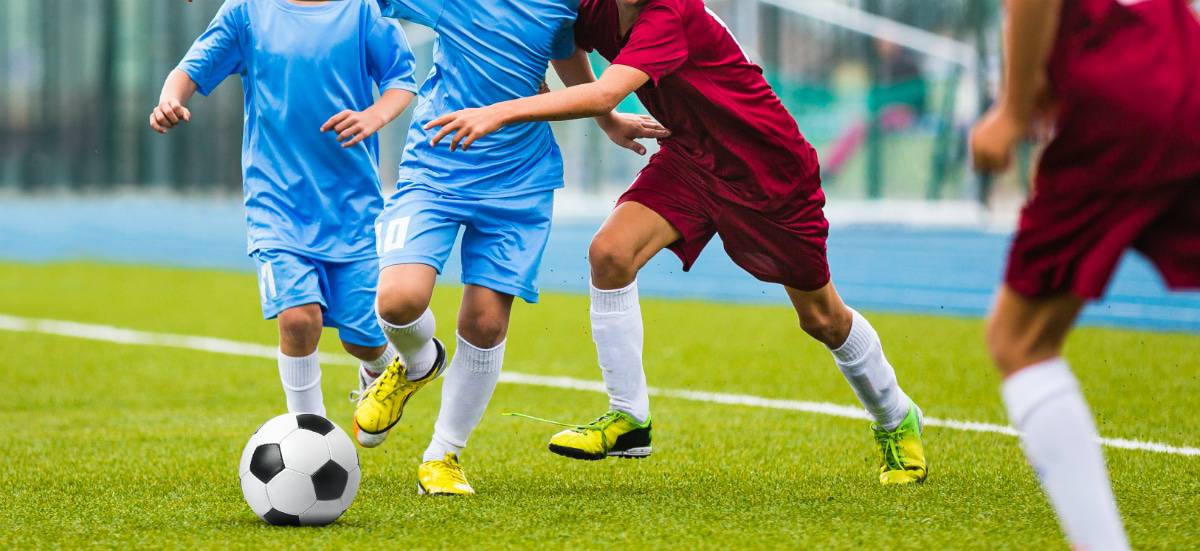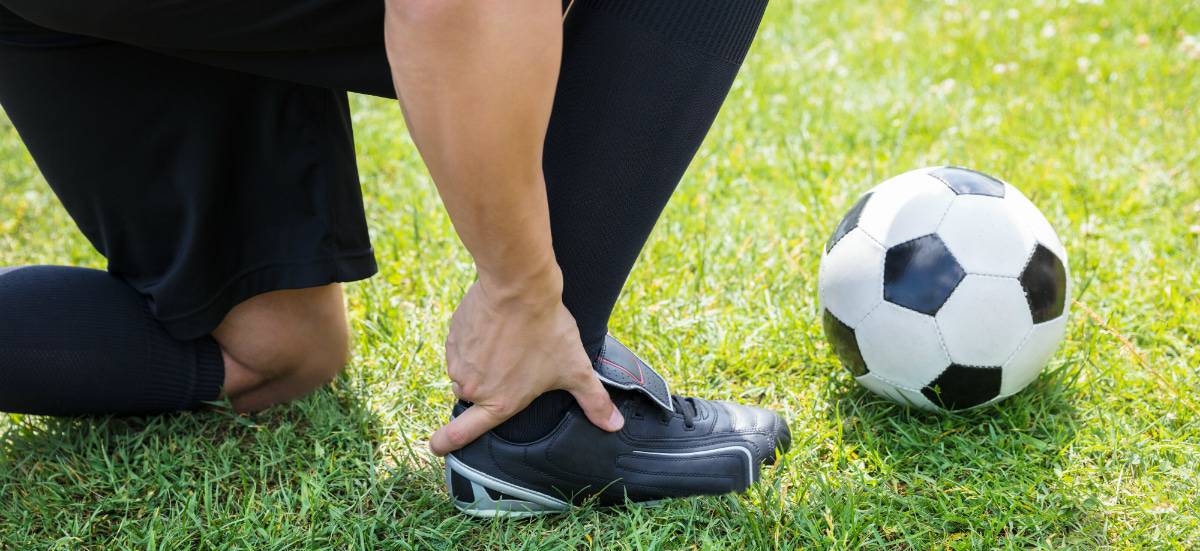Plantar Fasciitis Tips for Soccer Players
Stockton and Malone. Iniesta and Xavi. Sakic and Forsberg. Sports history is littered with legendary duos.
Well, here’s another sports duo that’s a lot less legendary, but just as well known to thousands (if not millions) of athletes of all levels around the world: soccer and plantar fasciitis.
Of course, with any sport there’s always a risk of injury, including overuse injuries like plantar fasciitis heel pain. Soccer players are definitely not unique in this regard!
That said, for a variety of reasons, soccer players are at higher risk than athletes in many of other sports. And unfortunately, once a bad case of heel pain becomes chronic, it can be very difficult to shake it. That means more pain making it difficult just to get through your day—let alone contribute on the pitch.
Are you starting to feel the pain in your heels each morning, whenever you play, or throughout the day? It may help you tremendously to know the biggest plantar fasciitis risks for soccer players—and how you can do your best to minimize them.

Why Do Soccer Players Get Plantar Fasciitis? And What Can They Do About It?
As we said, soccer players can develop plantar fasciitis for a variety of reasons. Some are the same reasons that anyone might develop the condition, although they are frequently exacerbated by the rigors of athletic training and competition.
The Problem: Poor Foot Structure
Unfortunately, not all feet are equally proficient at the work of cushioning and supporting your weight.
Just as many people are born with less-than-perfect eyesight (for example), many people are also born with biomechanical or structural foot flaws, such as flat feet or high arches. This can increase the pressure and tension on the heels.
The solution?
Get yourself a gait analysis—ideally from a foot and ankle expert who specializes in sports biomechanics. (Us, for example.)
Different doctors will have different procedures and tech. At the Colorado Center for Podiatric Sports Medicine, we use an advanced pressure mat that gives us a digital map and segmental foot assessment—a huge improvement over simply walking on a treadmill with a camera rolling.
(Of course, that’s just part of a more comprehensive evaluation we’ll also provide.)
The gait analysis data and standard evaluation will help us determine not only the basic structure of your foot, but also what’s going on during all three primary gait pivots (heel, ankle, and forefoot). This gives us precise data to identify misalignments, asymmetry, mistiming, and other subtle flaws.
And armed with that data, we can prescribe treatment options that will actually work—for example, the perfect pair of custom orthotics to counteract the precise biomechanical deficits you have.
The Problem: Poor Footwear
Are you wearing the wrong pair of cleats? You’d be surprised at how many players shod themselves with boots that just aren’t right for them.
It’s not necessarily a matter of buying a more expensive pair, either. It could just be that your current pair doesn’t fit you, doesn’t provide enough support for your specific foot structure, is worn out, or isn’t right for your style of play.
The solution?
You’re in luck, because we also provide soccer cleat evaluations to help ensure you get the right pair.
The gait analysis we talked about? That is often part of the process here. We’ll also talk to you about your symptoms, your game, your environment—everything from the position and style you play, to the field you play on, to your level of competition. Bring your old pair of cleats along, too.
For here, we’ll be able to help guide you on what you personally should look for in a cleat—uppers, midsoles, heel counters, stud patterns, and more.

The Problem: Tough Terrain
For the most part, the best kind of field to play on is soft, well drained natural grass. That doesn’t mean you won’t get plantar fasciitis, of course—just that your risk is relatively lower.
If, instead, you typically play indoors, on artificial turf, or on other harder surfaces, your feet and heels absorb more impact force.
On the other hand, surfaces that are too soft (like waterlogged grass) can also lead to increased pronation and also result in heel pain.
The solution?
Unfortunately, depending on your location, league, etc. you don’t always get a say in where you play. That said, you should avoid playing in dangerous conditions whenever possible. If the pitch drains poorly or is uneven, try to find another field (or wait for it to dry).
If conditions are less than ideal, it may be worth looking into adjusting your footwear or your playstyle. Some cleats are designed specifically to deal with turf, for example. If you tend to play a lot on both turf and grass, you should really consider having a separate pair of cleats for each surface.
The Problem: Poor Conditioning
Are you a weekend warrior? Just getting back into the game after taking it a little too easy during the off-season? Those who try to do too much, too soon are at high risk of all sorts of sports injuries—including heel pain.
Weak muscles, tight tendons, and poor flexibility and range of motion in the lower legs and feet can’t always support you the way you need them to.
The solution?
It’s important to condition your body properly so that it can meet the physical challenges you subject it to. That doesn’t mean you have to spend all day in the gym, but it does mean you should listen to what your body is telling you and avoid going too hard, too fast.
If you’re a bit out of shape for the new season, start your training early, and slow. Build gradually week by week, so that by the time you’re ready to compete you’re at full strength and speed. And of course, remember to warm up, cool down, and stretch.
The Problem: Overtraining
As they say, all things in moderation. While poor conditioning is a big problem, overtraining your heels past their breaking point and not giving them enough rest and recovery time is perhaps an even more serious issue.
If you’re running and playing hard every day, with no off-days or cross training, chances are you’re eventually going to wear your heels down.
The solution?
Cross train. Soccer is awesome, but it can be hard on your feet and heels. And if you’re training hard with soccer, running, and high-impact exercise every day, they’re going to wear down—especially if you’re playing indoors or on turf.
So, make sure you build adequate rest days—away from the pitch—into your schedule. And on those off-days, prioritize low-impact exercise. Go to the gym and focus on your strength training. Go for a bike ride (or ride the stationary). Go swimming.

The Problem: You Keep Ignoring Your Foot Pain.
Let’s skip right to the solution—stop doing that!
If your feet are hurting and it’s affecting the way you play the game, trust them to Dr. Jamie Yakel and the Colorado Center for Podiatric Sports Medicine.
We are the official team podiatrist of the MLS Colorado Rapids, and we love to treat soccer players and athletes of all ages and ability levels—with a variety of advanced services and treatment options you won’t find in an ordinary podiatry office.
To schedule an appointment with us, please call (720) 600-3380 today.
© Colorado Center for Podiatric Sports Medicine | Privacy Policy

